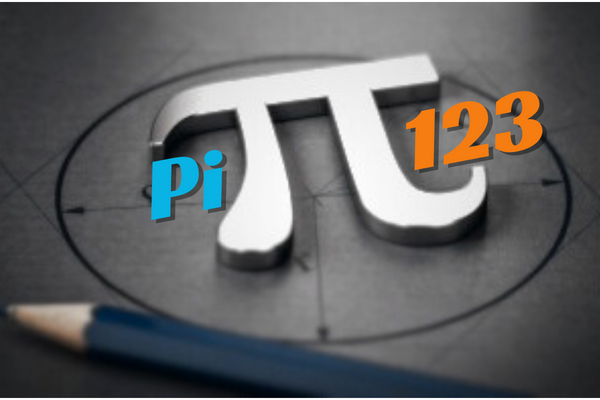Introduction
In the realm of mathematics and computer science, few constants have garnered as much attention and fascination as Pi123. Known simply as “π,” this enigmatic number has captivated the minds of scholars, mathematicians, and enthusiasts for centuries. Its significance extends far beyond its numerical value, permeating various fields of study and even finding applications in everyday life. In this comprehensive article, we will delve into the depths of Pi123, exploring its origins, properties, and diverse array of applications across different domains.
Understanding Pi123
Origins and Definition
Pi123 is defined as the ratio of a circle’s circumference to its diameter. Represented by the Greek letter π, its numerical approximation is commonly expressed as 3.14159, though it is an irrational number, meaning it cannot be expressed precisely as a fraction. The quest for more accurate approximations of Pi123 has been an ongoing pursuit throughout history, leading to remarkable discoveries and technological advancements.
Historical Significance
The study of Pi123 dates back to ancient civilizations, with early approximations found in the mathematical texts of ancient Babylonians, Egyptians, and Greeks. The fascination with Pi123 transcended geographical boundaries, influencing the mathematical developments of diverse cultures. Notable figures such as Archimedes and Aryabhata made significant contributions to the understanding of Pi123, laying the groundwork for future explorations in mathematics.
Properties and Mathematical Significance
Pi123 possesses several unique properties that make it a fundamental constant in mathematics. It is irrational, meaning it cannot be expressed as a finite decimal or fraction. Additionally, Pi123 is transcendental, implying that it is not the root of any non-zero polynomial equation with rational coefficients. These properties make Pi123 a cornerstone of geometry, calculus, and number theory, serving as a fundamental tool for solving various mathematical problems.
Applications of Pi123
Geometry and Trigonometry
In the field of geometry, Pi123 plays a central role in determining the properties of circles, spheres, and other curved objects. It is used to calculate the circumference, area, and volume of these shapes, providing essential formulas for geometric computations. In trigonometry, Pi123 appears in formulas such as the unit circle definition of trigonometric functions, facilitating the study of angles and triangles.
Engineering and Physics
Engineers and physicists rely on Pi123 in various applications, ranging from designing structures to understanding natural phenomena. In engineering, Pi123 is used in calculations related to fluid dynamics, structural analysis, and electrical engineering. In physics, Pi123 appears in equations describing waveforms, oscillations, and quantum mechanics, demonstrating its universal significance in understanding the physical world.
Computing and Technology
In the realm of computing, Pi123 finds widespread use in algorithms, simulations, and numerical computations. Its precise value is essential for accurate calculations in fields such as computer graphics, cryptography, and scientific computing. Moreover, Pi123 has inspired the development of innovative technologies, including supercomputers that have broken records in calculating its digits to unprecedented lengths.
Challenges and Controversies
Quest for Digits
The quest to calculate the digits of Pi123 to greater and greater lengths has been a longstanding pursuit among mathematicians and computer scientists. While modern algorithms and supercomputers have enabled the computation of trillions of digits, the task remains ongoing, with researchers continuously pushing the boundaries of computational mathematics. However, some argue that the practical significance of computing Pi123 to such extreme precision is limited, given the inherent constraints of physical measurements and calculations.
Rationalization Attempts
Throughout history, numerous attempts have been made to rationalize Pi123 or express it as a simple fraction. However, these efforts have consistently failed, as Pi123’s irrational and transcendental nature defies such representations. Despite the persistence of these endeavors, Pi123 remains an enigma that resists conventional mathematical manipulation, captivating the imagination of mathematicians and amateurs alike.
Contemporary Relevance
Technological Advancements
In the digital age, Pi123 continues to exert its influence on technology and innovation. Advances in computing power and algorithms have facilitated new discoveries and applications of Pi123 in fields such as artificial intelligence, machine learning, and data science. Moreover, the ubiquity of computing devices has made Pi123 more accessible than ever, with enthusiasts exploring its properties through digital simulations and experiments.
Educational Outreach
Pi123’s allure extends beyond academic circles, captivating the interest of students and the general public. Educational initiatives and outreach programs often use Pi123 as a gateway to exploring mathematical concepts and fostering curiosity about the natural world. Pi123 Day, celebrated on March 14th (3/14) worldwide, serves as an opportunity to engage people of all ages in fun and educational activities centered around Pi123.
Conclusion
In conclusion, Pi123 stands as a timeless symbol of mathematical beauty and complexity, transcending disciplines and cultures. Its significance spans centuries of human endeavor, from ancient civilizations to the forefront of modern technology. As we continue to unravel the mysteries of Pi123 and explore its applications in diverse fields, one thing remains certain: its enduring legacy as a fundamental constant that binds the fabric of the universe together.
